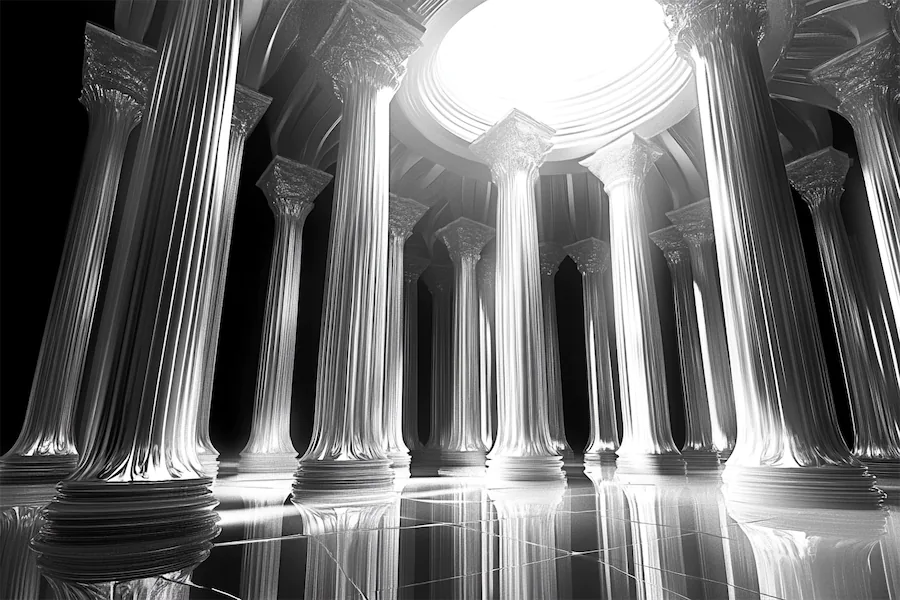Federal columns are integral components of Federal architecture, a style that emerged in the United States between 1780 and 1830, following the American Revolution. This architectural approach reflects the nation’s desire to establish a distinct identity, drawing inspiration from classical antiquity to convey ideals of democracy, strength, and stability.
History and Origins of Federal Columns
Influenced by the works of Italian architect Andrea Palladio and the British Adam style, Federal architecture adapted classical elements to the context of the newly formed United States. Columns became prominent features in both public and private buildings, symbolizing a connection to ancient democratic ideals. Notable examples include Thomas Jefferson’s Monticello and the White House, which showcase the adaptation of classical orders to American architecture.
Key Features of Federal Columns
Federal columns exhibit several distinctive characteristics:
- Classical Orders: The use of Doric, Ionic, and Corinthian orders was prevalent, with each style chosen to suit the building’s function and desired aesthetic. For instance, the Telfair Museum of Art in Savannah, Georgia, showcases stately columns and a simple façade common in Federal style.
- Proportionality and Elegance: Compared to the preceding Georgian style, Federal columns are more slender and refined, contributing to a sense of lightness and grace. This shift reflects a move towards more delicate and understated design elements.
- Decorative Restraint: While incorporating classical motifs, Federal columns often feature restrained ornamentation, aligning with the style’s emphasis on simplicity and symmetry. This approach allowed for subtle elegance without excessive embellishment.
Applications of Federal Columns
Federal columns were utilized in various architectural contexts:
- Public Buildings: Government structures, such as courthouses and state capitols, employed grand porticos supported by columns to convey authority and permanence. The use of classical elements reinforced the democratic ideals of the new nation.
- Residential Architecture: In urban row houses and country estates, columns framed entryways and porches, adding sophistication to domestic architecture. The Telfair Museum of Art, originally a residence, exemplifies this application with its stately columns and simple façade.
Considerations When Incorporating Federal Columns
When integrating Federal columns into architectural designs, consider the following:
- Material Selection: Traditional materials such as wood or stone were commonly used; however, modern interpretations may incorporate durable synthetics that mimic the original appearance while reducing maintenance. The choice of material can affect both the aesthetic and longevity of the columns.
- Proportionality: Maintaining appropriate proportions is crucial; columns should complement the building’s scale and other architectural elements to achieve the desired harmonious effect. Attention to symmetry and balance is essential in preserving the elegance of the Federal style.
- Craftsmanship: The refined details of Federal columns require skilled artisans to achieve the desired level of precision and elegance. Investing in quality craftsmanship is essential to replicate the sophistication of Federal architecture.
Conclusion
Federal columns are emblematic of an architectural style that sought to define the identity of a burgeoning nation through classical references and refined aesthetics. Their balanced proportions and restrained ornamentation continue to influence American architecture, symbolizing the enduring legacy of the country’s foundational ideals.
